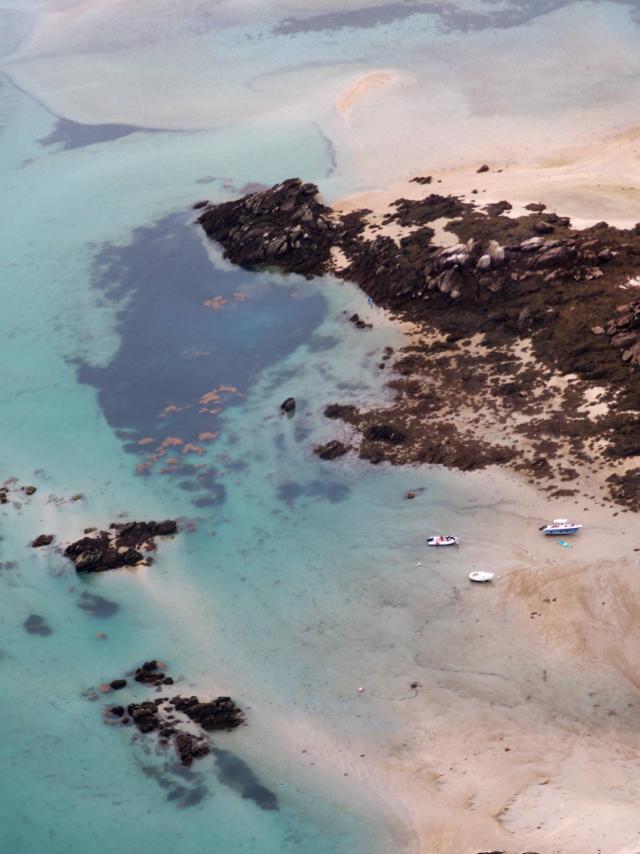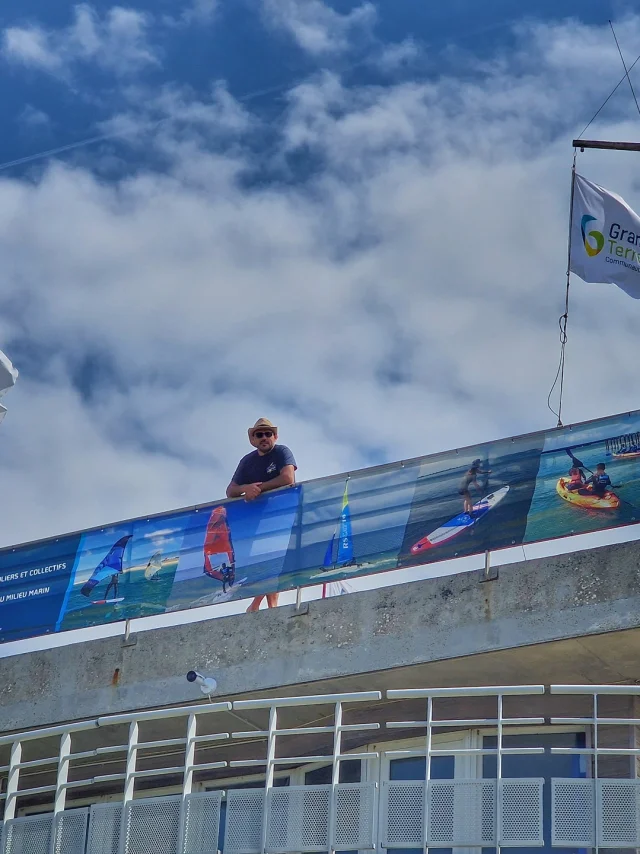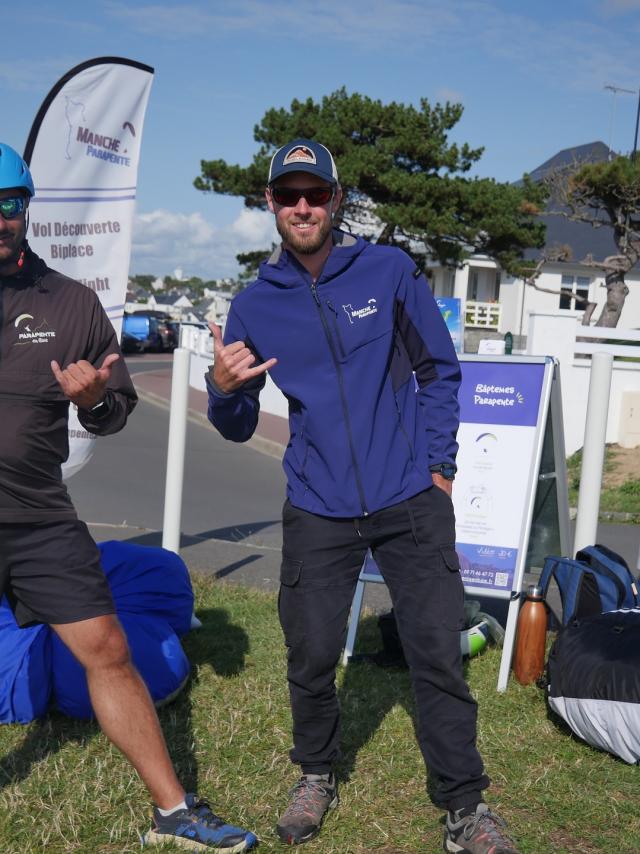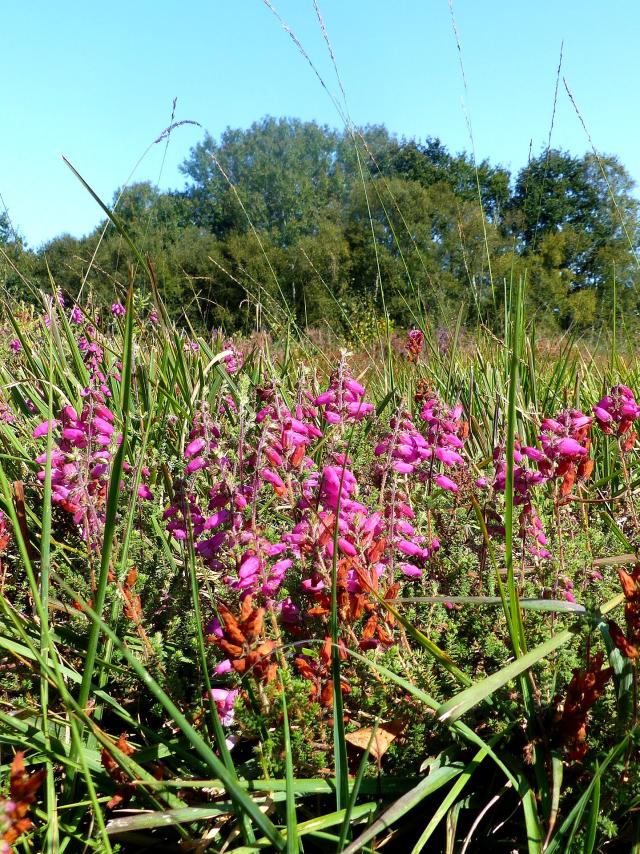The cliffs of Carolles and Champeaux, protected since 2001, are of great biological diversity, but also of great scenic interest, thanks to the magnificent panorama they offer over the Bay of Mont-Saint-Michel. The high cliffs of this granite massif are perhaps the most beautiful viewpoint to be found over the bay. With an average height of 60 to 80 meters, they are covered with heather, gorse, broom and blackthorn moorlands, offering a stunning palette of colors ranging from lemon yellow to crimson pink, depending on the season. This granite massif is cut by a valley at the bottom of which flows the river Lude, which empties into the sea at Port du Lude. The cliffs are renowned as a bird migration hotspot, and several insects (locusts, grasshoppers, crickets) and reptiles (green lizard, smooth coronet) have made their home here. The entire site of the Carolles and Champeaux cliffs is 5 km long. This remarkable natural heritage is managed by the Conservatoire du Littoral, which has recorded 480 plant species, 30 orthopteran insect species and 348 butterfly species.
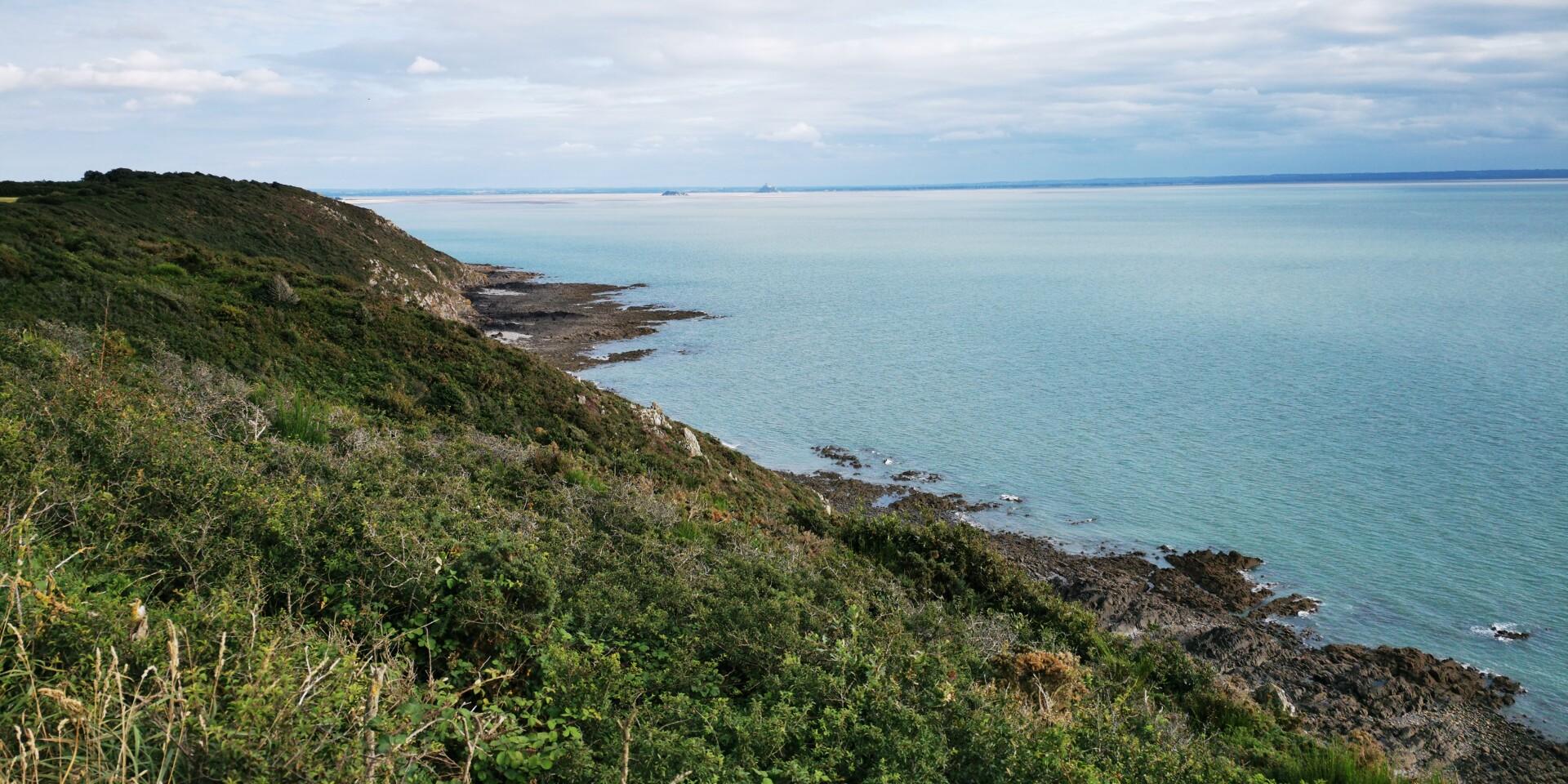 View of Tombelaine and Mont Saint-Michel from the Champeaux and Carolles cliffs
View of Tombelaine and Mont Saint-Michel from the Champeaux and Carolles cliffs The Bay of Mont Saint-Michel seen from the Champeaux cliffs
The Bay of Mont Saint-Michel seen from the Champeaux cliffs The Vauban hut and the coastal path on the cliffs of Carolles
The Vauban hut and the coastal path on the cliffs of CarollesHermel reef
Europe's largestAt the foot of this massif (below Champeaux), at low tide, you’ll find Europe’s largest hermit crab reef, with some reaching up to 1.5 metres in height. These colonies of tiny marine worms build 30-centimeter tubes of sand and shell debris on the rocks. Please avoid trampling these fragile natural habitats, which are home to a wide variety of marine fauna.
 The hermella reef at Champeaux is Europe's largest hermella reef.
The hermella reef at Champeaux is Europe's largest hermella reef.At the foot of the cliffs, on the Sol Roc site, low tide reveals the remains of ancient stone fisheries dating back to the 12th century, evidence of an intense traditional fishing industry. Cohorts of fishermen still flock here at ebb tide in search of “chevrettes”, the local name for shrimp. The foreshore is ideal for fishing for cockles, clams and prawns. On the rocks, you can find oysters, mussels and periwinkles. In the distance, the immense oyster beds and bouchots at low tide bear witness to the bay’s formidable biological productivity, which led to the emergence of this veritable “shellfish industry” from the 1950s onwards. Fishing is practiced all year round with a tidal coefficient of at least 80.
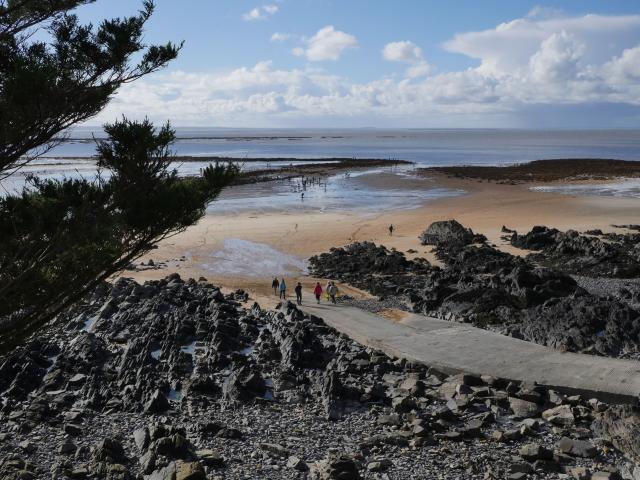 La Plage Du Sol Roc Credit Otgtm Estelle Cohier 35302 1920px
La Plage Du Sol Roc Credit Otgtm Estelle Cohier 35302 1920px Fishing on foot during high tides
Fishing on foot during high tides

